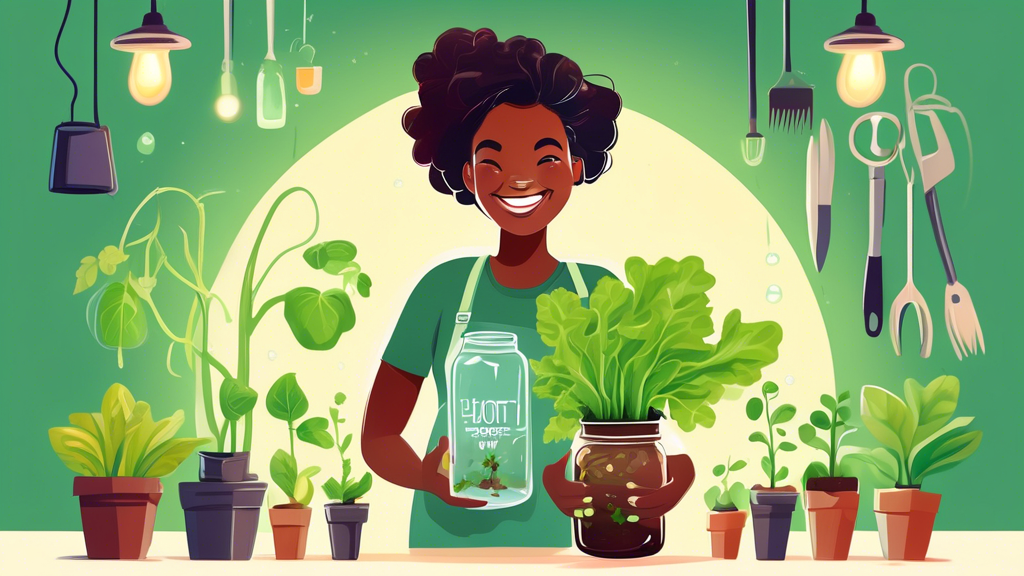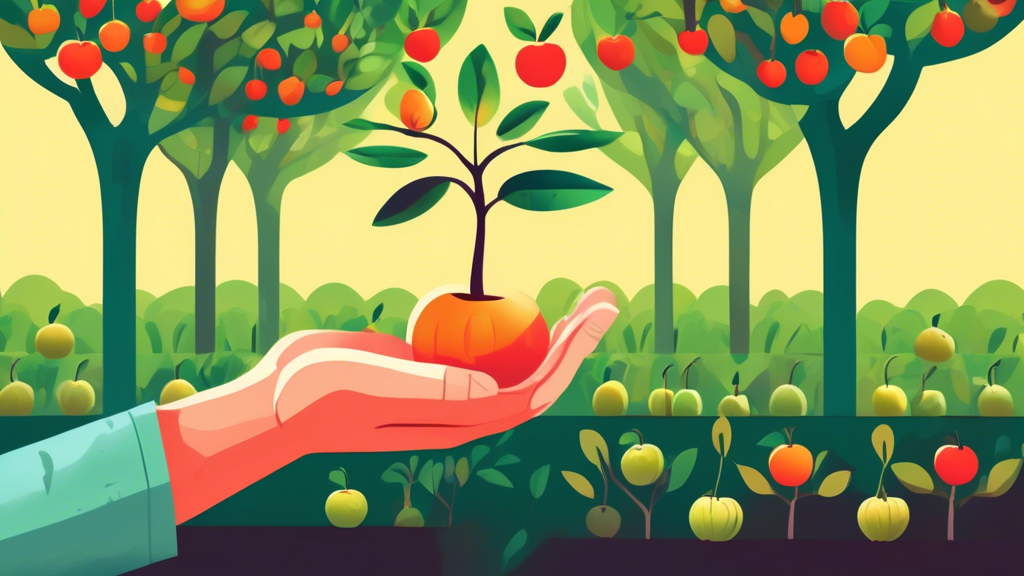
Why Start with Hydroponics? The Core Benefits
Faster Growth & Higher Yields
Plants grown hydroponically have direct, constant access to the perfect balance of nutrients, water, and oxygen. This eliminates the energy they would normally expend searching for these elements in soil, allowing them to redirect that energy into faster vegetative growth and fruit production.
Perfect for Small Spaces
Hydroponic systems are incredibly space-efficient. They can be set up vertically, on countertops, in closets, or on balconies, making fresh produce a reality for apartment dwellers and those with limited outdoor space.
Water Conservation Champion
In a world where water is an increasingly precious resource, hydroponics stands out. Because the water is contained and recirculated within the system, hydroponic gardening uses up to 90% less water than traditional soil-based agriculture.
Common Beginner Challenges (And How to Solve Them)
“I’m Afraid of System Complexity.”
Solution: Begin your journey with a passive, non-circulating system like the Kratky method or a simple Deep Water Culture (DWC) bucket. These systems have few moving parts, are inexpensive to build, and provide a hands-on understanding of the core principles without the intimidation factor.
“Nutrient Management Seems Overwhelming.”
Solution: Start with a high-quality, pre-mixed nutrient solution designed for the vegetative or flowering stage of your chosen plants. The key is to monitor the pH and Electrical Conductivity (EC). A simple pH testing kit and an EC meter are your best friends for preventing nutrient lockout and ensuring your plants are fed correctly.
“What If My Plants Get Diseases?”
Solution: The absence of soil immediately eliminates a huge host of soil-borne pests and diseases. The primary concern in hydroponics is root health. By ensuring your nutrient solution is well-oxygenated (using an air stone) and kept at a cool temperature, you can effectively prevent the most common issue: root rot.
Choosing Your First Hydroponic System: A Simple Comparison
| System Type | Best For | How It Works | Pros & Cons |
|---|---|---|---|
| The Kratky Method | Absolute beginners, leafy greens, herbs. | A completely passive, non-circulating system. Plants are suspended with their roots partly in a nutrient solution. As the plant drinks, the water level drops, creating an air gap for the roots. |
Pros: Inexpensive, no electricity or pumps needed. Cons: Not suitable for long-term or large plants; nutrient solution is not replenished during growth cycle. |
| Deep Water Culture (DWC) | Beginners ready for a more active role, fast-growing plants like lettuce and basil. | Plants are held in net pots on a floating platform (like a lid) with their roots submerged in a highly oxygenated nutrient solution. An air pump and air stone are used to bubble oxygen into the water. |
Pros: Very fast growth rates, simple to set up and maintain. Cons: Requires an air pump; power outages can be detrimental if prolonged. |
| Ebb and Flow (Flood and Drain) | Gardeners with a bit more space wanting to grow a wider variety of plants. | A submersible pump periodically floods the grow tray with nutrient solution from a reservoir below. After a set time, the water drains back, pulling fresh air into the root zone. |
Pros: Versatile; the flood and drain cycle is excellent for root health. Cons: More complex setup; relies on a timer and pump; pump failure can be a single point of failure. |
Essential Tips and Tricks for a Thriving Garden
Master the Two Key Numbers: pH and EC
Your plants’ ability to “eat” depends entirely on the pH and nutrient concentration (EC) of your water.
- pH (5.5 – 6.5): This slightly acidic range is where all essential nutrients are most available to your plants. Outside this range, plants experience “nutrient lockout,” where they starve even though food is present.
- Electrical Conductivity (EC): This measures the total dissolved salts (nutrients) in your water. A low EC means your plants are underfed; a high EC can “burn” them. Follow the instructions on your nutrient bottle for the ideal EC range for your plants’ growth stage.
The Right Light for the Right Plant
Light is your plants’ source of energy. For indoor grows, full-spectrum LED grow lights are the most efficient and coolest-running option. Provide 14-16 hours of light per day for leafy greens and herbs, and ensure the lights are close enough (usually 12-24 inches) to prevent “leggy,” stretched plants, but not so close that they cause light burn.
Don’t Overlook Root Zone Oxygen
Oxygen to the roots is the secret engine of hydroponics. While air stones are the common solution, many beginners miss a critical, interconnected factor: water temperature.
Unique Insight: Warmer water holds significantly less dissolved oxygen. This is why a reservoir that gets too warm is the primary cause of root rot—the roots suffocate. A secret trick for robust growth is to actively keep your nutrient solution cool, ideally between 65-68°F (18-20°C). You can use a simple aquarium chiller or even frozen water bottles to maintain this temperature, ensuring your roots are oxygen-rich and healthy.
Your First Plants: What to Grow for Guaranteed Success
Start with plants that are forgiving and have short growth cycles. This builds confidence and provides quick rewards.
- Top Recommendations: Lettuce, Spinach, Kale, Swiss Chard, Basil, Mint, Cilantro.
- Plants to Avoid at First: Large, heavy-fruiting plants like tomatoes, peppers, and cucumbers. They require more intense light, precise nutrient management, and longer-term commitment.
Frequently Asked Questions (FAQs)
Is hydroponics more expensive than traditional gardening?
There is a higher initial investment for equipment like a system, grow lights, and pH/EC meters. However, over the long term, you save significantly on water, soil, pesticides, and fertilizers. The faster growth cycles and higher yields per square foot also make it a cost-effective method for producing your own food.
How often do I need to change the water in my hydroponic system?
A general rule is to perform a full nutrient solution change every 2 to 3 weeks. In between changes, you will need to “top off” the reservoir with plain, pH-balanced water as the plants drink. When you change the solution, it’s a good practice to clean the reservoir to prevent algae and salt buildup.
Can I use regular plant fertilizer for hydroponics?
No. Soil fertilizers and hydroponic nutrients are formulated differently. Soil fertilizers rely on soil microbes to break them down into a usable form for plants, and they often lack certain critical, immediately available micronutrients. Using them in a hydroponic system can lead to nutrient deficiencies and can clog pumps and lines.
Do hydroponic plants taste different?
Many people report that hydroponically grown produce has a cleaner, more pronounced, and often sweeter flavor. Since the plant isn’t struggling against soil conditions or competing for nutrients, it can develop its full flavor profile. Herbs, in particular, are known for their intense aroma and taste when grown hydroponically.
Conclusion: Embarking on your hydroponic journey is an exciting step towards self-sufficiency and fresh, homegrown food. By starting with a simple system, mastering the fundamentals of pH and nutrients, and choosing the right plants, you are setting yourself up for a rewarding and successful experience. Remember the secret of a cool reservoir, and don’t be afraid to learn by doing. Your green thumb is about to get a high-tech upgrade!






